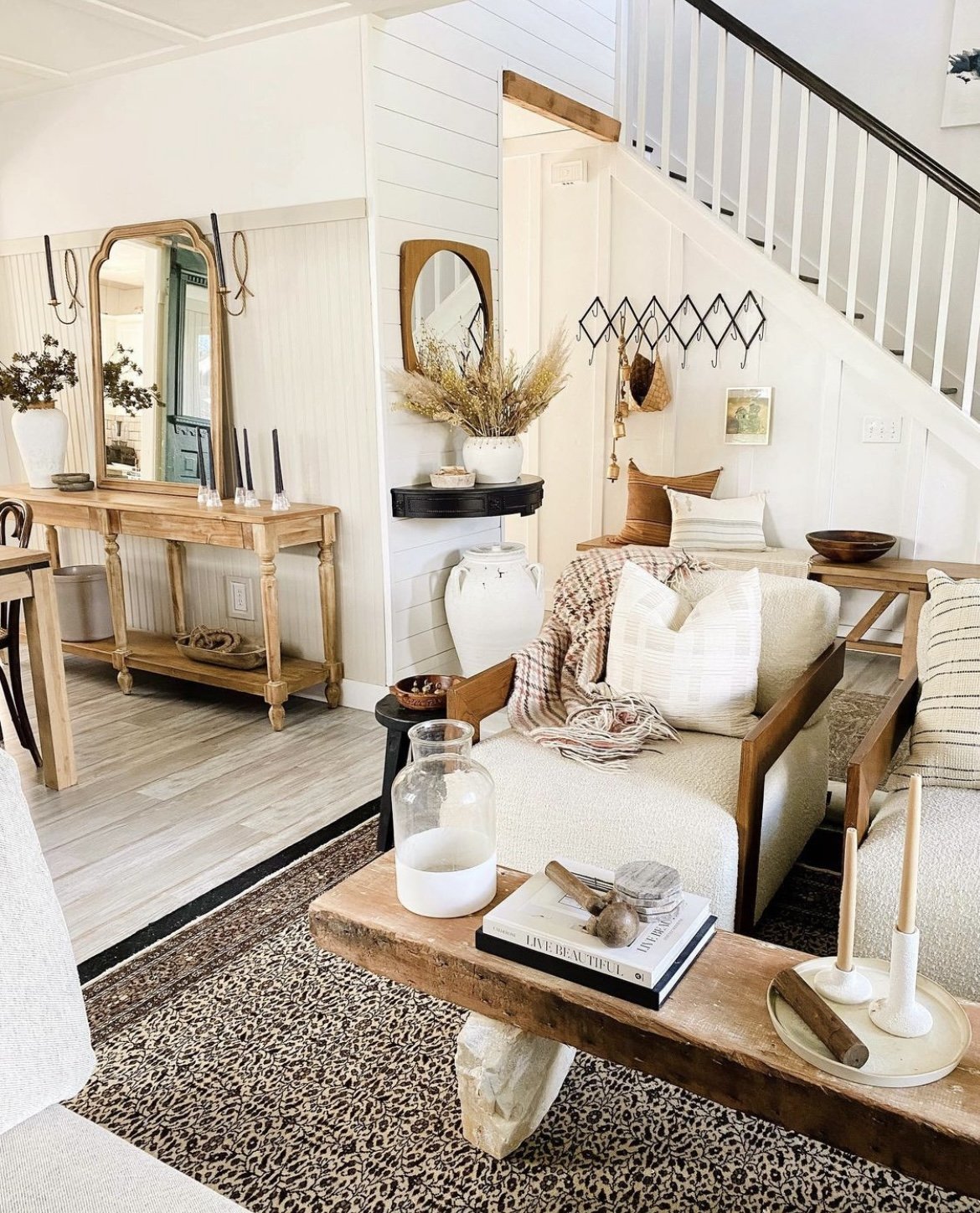How To Mix Wood Tones In Your Home
/If you’ve seen my home before, you already know I love the warmth and earthiness that wood furniture and decor add to a room. It’s the perfect grounding balance to my favorite black and white combo, but it also complements playful colors just as well. I can’t imagine a space without some form of wood whether it be the floors, wood paneled walls, a rustic wooden door, or some weathered wood accents. It’s just simply one of the best and most versatile materials. However, I notice a lot of people start to panic when it comes to mixing wood tones in a home. Either they’re afraid to step outside the box and only use one single specific wood tone throughout their home, which can often look flat and one-dimensional. OR they use any and every wood piece they find in one space which can easily overpower a room. I think the key here is to find the perfect balance of wood tones that both complement and contrast. Here are a few tips for achieving that layered, lived-in look that designers strive for.
The first step to achieving this balance is to figure out (or create) your dominant wood tone. If you’re looking at a space from afar this would be the largest wood component that immediately stands out to you. Maybe it’s hardwood floors, a large wooden dining table, or a wood paneled ceiling like mine! Then ask yourself - is the tone light, medium or dark? Once you’ve got that established, you’ll want to draw in some contrasting tones next. For example, if you have dominant light maple floors you can bring in some dark walnut wood in a coffee table or console. Or if you have a large grey toned built-in that is the main focus, try bringing in some different cool wood tones such as a light pine or ashy colored wood.
Slowly add in more contrasting tones until you have at least one variation of a light, medium, and dark wood. The key here is to make sure that each tone is repeated at least 2-3 times to give it a cohesive, curated look. It helps to vary the sizes too so maybe try a mix of furniture pieces, flooring/wall treatments, and then smaller accents. Wooden chain links, vases, bowls, decorative beads are all great small accent pieces to easily repeat a certain wood tone. Warm Toast Designs has some great affordable wooden decor including this wooden chain link that I have!
Try and stick to a palette of either warm or cool tones. Walnut, cherry and hickory tend to lean warm with orange, yellow, and red undertones. Whereas maple, poplar, ash, and pine are typically considered cooler tones that read more blue, green, black or gray. Walnut is a great go-to because it is so neutral and can easily read either way depending on the woods you mix it with!
Spread out the wood pieces throughout the space so they’re not clustered to one area. Layer in a patterned rug that breaks up your hardwood floors from your reclaimed wood coffee table or lounge chairs. Add in your other complementary materials like natural textiles, painted woods, ceramics, and metal finishes. These will add to the effortless “layered” look that we’re going for.
Before you know it you’ll have a balanced, cozy space that is accented by woods of all different shades! By following these easy tips, you should be able to let your dark woods and light woods happily intermingle without competing or overwhelming the room. If you’re still wanting a little more guidance or inspiration, here are some roundups of light, medium, and dark decor!















